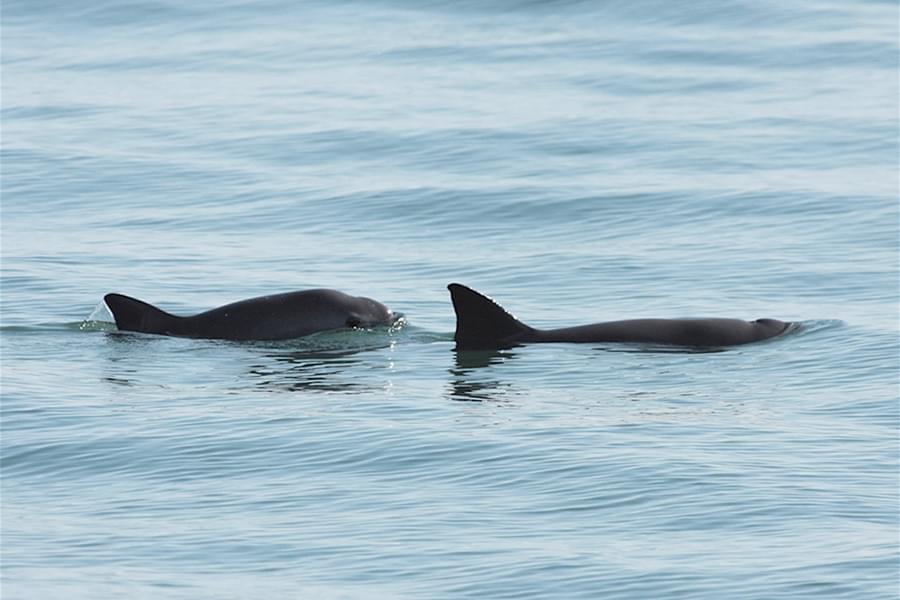The vaquita porpoise is listed as being critically endangered by the IUCN, with only ten individuals remaining, however, a new genetic study has stated that the vaquita may not be "doomed to extinction".
The vaquita porpoise is the smallest of all the cetacean species. But sadly, it also claims the title of the most endangered marine mammal in the world, with a population of only around ten individuals remaining.
They are only found in the Sea of Cortez in the Gulf of Mexico, living in an area of 2,235 square kilometres. Vaquita have a preference for shallow waters along the shore, which sadly puts them in danger of being caught in nets when locals are illegally fishing another endangered species, the totoba fish. Totoaba fish are caught for their swim bladders which are used in Chinese medicine, causing both species to be threatened.
The vaquita is unique, with black patches around their eyes and black lips, making them look like they are smiling. They grow to a maximum length of 1.5 metres and have an unusually tall dorsal fin for such a small species. They have a chunky grey body with pale sides, a white belly, a rounded head, and no distinguished beak.
Their primary diet consists of fish and squid, but occasionally, they will also eat crab and lobster. Vaquitas are shy and retiring, spending most of their time under the waters and avoiding boats. They swim smoothly through the water, surfacing slowly, showing very little of themselves above the surface.
The vaquita was only discovered in 1958; however, the first comprehensive survey for this species wasn't carried out till 1997, when the population was still around 600 individuals. Since then, the population has rapidly declined, with 90% lost in just five years between 2011 and 2016.
The biggest threat to the vaquita is being caught in fishing nets, which has ultimately wiped them out. Most commonly, they are caught in large weighted gillnets used by illegal fishing operations within the marine protected area in which they live. They become entangled, unable to get to the surface to breathe, resulting in suffocation.
The study, which has been published in Science, has found that the vaquita is not "genetically compromised". Many had given up hope that the vaquita could be saved due to the risk of so-called inbreeding depression, which reduces offspring's survival rate and fertility. However, this latest study suggests that, as there has always been a low population of vaquitas, they have always had low levels of genetic variation. Since this low genetic variation has not been the cause of their rapid decline, their numbers should recover if their habitat is fully protected.
Researchers from several institutes, including the National Oceanic and Atmospheric Administration Fisheries (NOAA), analysed vaquitas which were caught between 1985 and 2017 and were closely related to those alive today.
Based on genetic findings, they used computer models to predict how populations might change over the next 50 years. Simulations were run to find a scenario that would work to best protect the vaquita and predict their extinction rates of the next 50 years. The results of these simulations showed that immediately removing gillents from the vaquita’s habitat was the best solution for their survival.
Past attempts to ban gillnets in the area vaquitas live have been met with opposition from local fishing communities. There have been tensions between conservationists and locals over the enforcement of fishing bans by the Mexican government. Despite a ban being put in place, illegal fishing is still rife in the vaquita's home, with discarded nets continuing to cause a big problem.

